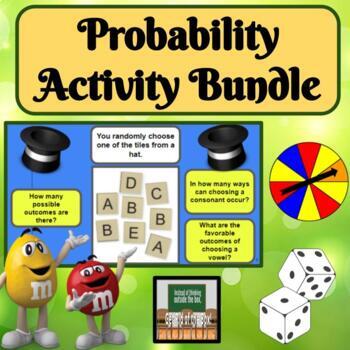Probability Bundle Hands On Dice Cards Coins Simple Probability
- Zip

Products in this Bundle (5)
Description
About this Resource:
This bundle includes activities/lessons for uniform versus non-uniform, probability lesson, hands-on, digital interactive notebook, and the basics.
ALL OF THESE PRODUCTS AT A 30% DISCOUNT!
✓ Teacher Tested
✓ Student Approved
*This product has been used in my classroom and enjoyed by my students!
Other products with similar content.
Data Analysis Products
Other available bundles.
Bundles
Reviews mean TPT credits for you!
Make sure you leave a review of any purchased products to earn credit toward future purchases!
Terms of Use:
By purchasing this product, you own a license for one teacher only. No part of this resource should be shared with colleagues or used by an entire team, grade level, school, or district without purchasing the correct number of licenses. Licenses are non-transferable. Resources may be posted online if they are behind a password protected site for student access.
©Getting Rid of the Box, 2015-Present





